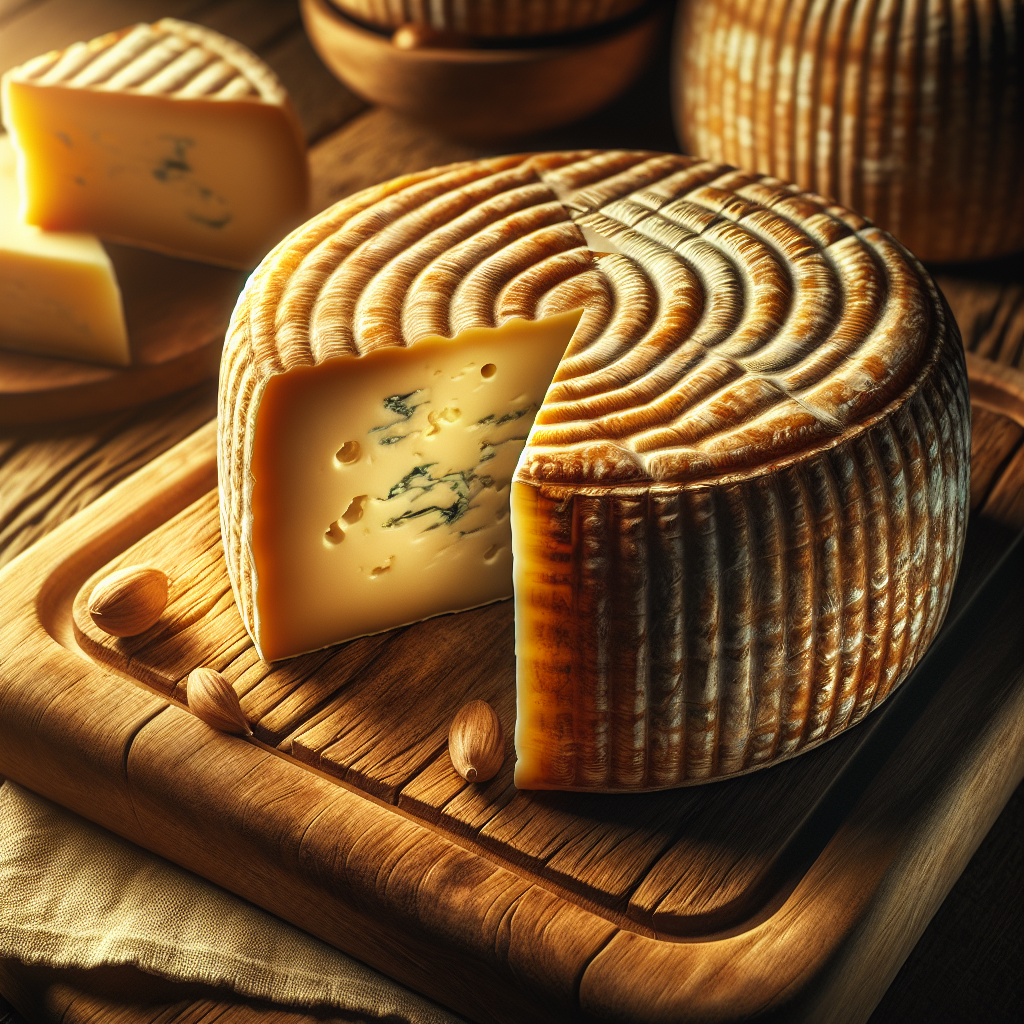If you’ve ever dreamed of becoming a cheese aficionado and creating your own delectable gourmet cheeses from the comfort of your own home, look no further. Tastepan.com has your back with an incredible collection of artisanal cheese making recipes that will take your taste buds on a heavenly journey. With clear step-by-step instructions, handy ingredient lists, and expert tips, you’ll be able to craft mouthwatering cheeses that will impress even the most discerning of cheese connoisseurs. Get ready to delve into the art of cheese making and discover a whole new world of flavor possibilities.

Overview of Artisanal Cheese Making
Artisanal cheese making is the process of creating high-quality, gourmet cheeses at home using traditional methods and ingredients. Instead of relying on mass production, artisanal cheese makers focus on producing small batches of cheese, allowing for more attention to detail and enhanced flavors. This craft has a rich history and offers numerous benefits to those who embark on the cheese making journey. In this article, we will explore the basics of artisanal cheese making, including its history, the benefits of making cheese at home, and the common types of artisanal cheeses.
Getting Started
Before diving into the cheese making process, it’s important to obtain fresh milk, as the quality of the milk greatly impacts the final product. You can acquire fresh milk from local dairies or consider raising your own dairy animals for a truly farm-to-table experience. Once you have fresh milk, it’s essential to choose the right cheese making equipment, such as cheesecloths, molds, thermometers, and cheese presses.
Gathering the necessary ingredients is another crucial step in the cheese making process. Depending on the type of cheese you want to make, you may need culture, rennet, salt, and other flavorings. Understanding the cheese making process itself is vital as well — knowing the science behind curdling milk and the various stages involved will help you achieve the desired results.

Preparation and Sanitization
To ensure the quality and safety of your cheese, proper preparation and sanitization are key. Before starting the cheese making process, it’s important to clean and sterilize all equipment to prevent any unwanted bacteria from contaminating the cheese. This includes thoroughly washing and sterilizing all utensils, containers, and surfaces.
Preparing the cheese making area is also essential for a successful cheese making endeavor. Create a clean and organized space where you can efficiently work through the different stages of cheese making. This will help maintain a hygienic environment and minimize any potential mishaps.
Furthermore, preparing the culture and rennet correctly is crucial for cheesemaking success. Following the instructions provided with the culture and rennet, you need to ensure proper activation and preparation to initiate the fermentation and coagulation processes effectively. Measuring the ingredients accurately is also essential to achieve consistent results.
Milk Pasteurization
Pasteurization is a crucial step in cheese making as it helps eliminate harmful bacteria while preserving the beneficial enzymes and flavor components in the milk. There are different methods of pasteurization, including low-temperature vat pasteurization and high-temperature short-time pasteurization. The choice of method depends on the type of cheese you are making and the regulations in your country or region.
Ensuring proper temperatures during the pasteurization process is vital. Following specific temperature ranges and timing guidelines will help destroy any harmful bacteria present in the milk. Once pasteurized, the milk should be cooled and stored in clean, sanitized containers to maintain its freshness and quality.

Curd Formation
After milk pasteurization, the curd formation process begins. This stage involves curdling the milk to separate the solids (curds) from the liquid (whey). To initiate the curdling process, starter cultures are added to the milk. Starter cultures introduce beneficial bacteria and contribute to the development of unique flavors and textures in the cheese.
Additionally, coagulants or rennet are added to further aid in curd formation. Rennet contains enzymes that help coagulate the milk proteins, leading to the formation of a solid curd mass. During this stage, it is important to allow sufficient time for the curds to form properly. The time required for curd formation varies depending on the type of cheese being made.
Cutting and Draining
Once the curds have formed, they need to be cut into small pieces to release the whey trapped within. The size and shape of the curds affect the moisture content and texture of the final cheese. Cutting the curds requires precision and attention to detail, as the size and uniformity of the curds greatly impact the final product.
Draining the whey from the curds is the next step in the cheese making process. This can be done by gently transferring the curds to a cheesecloth-lined mold or using a curd cutter to facilitate drainage. The whey can be collected for other culinary uses or animal feeding, ensuring minimal waste during the cheese making process. The optimal curd moisture level depends on the desired cheese type and can be achieved by adjusting the draining time and technique.
Cheese Molding and Pressing
Choosing appropriate cheese molds is crucial for achieving the desired shape and texture of the cheese. Different types of cheeses require different mold styles, which can range from cylindrical molds to baskets or forms with intricate patterns. Once the curds are transferred to the molds, pressing them with appropriate pressure is essential to remove excess whey, consolidate the curds, and shape the cheese properly.
Pressing cheese involves gradually applying increasing weight or pressure to the curds over a specific period of time. This process helps expel any remaining whey, giving the cheese its characteristic texture and density. The stages of pressing cheese vary depending on the type of cheese, ranging from light pressing for soft cheeses to heavy pressing for harder varieties.
Salting and Aging
Salting plays a crucial role in cheese making, as it enhances flavor, aids in preservation, and helps control moisture. There are different methods of salting, including dry salting and brine salting. Dry salting involves sprinkling salt directly on the cheese, while brine salting involves submerging the cheese in a saltwater solution. The choice of salting method depends on the type of cheese and personal preference.
Determining the salt content is important, as it affects the taste and texture of the cheese. Salt content is measured as a percentage of the cheese’s weight. Proper aging of the cheese is crucial for flavor development and texture refinement. Creating a suitable aging environment with controlled temperature and humidity levels allows the cheese to mature and develop its unique characteristics.
Factors affecting cheese aging include cheese type, size, desired flavor profile, and personal preference. Some cheeses are aged for a few weeks, while others require months or even years of aging to reach their full potential.
Cheese Care and Ripening
Caring for aging cheese involves monitoring temperature and humidity levels within the aging environment. Cheese should be stored at the appropriate temperature range, which varies depending on the cheese type. In general, a cool and slightly humid environment is ideal for slow and steady ripening.
During the aging process, the cheese requires care and attention. This includes turning and flipping the cheese regularly to ensure even development and prevent certain flavors and textures from dominating. By understanding the complex process of flavor development, cheese makers can adjust the aging conditions to achieve their desired taste profiles.
Troubleshooting and Tips
Despite careful planning and execution, cheese making can sometimes encounter challenges. Understanding common cheese making problems and their solutions is essential to troubleshoot any potential issues. Common problems include texture issues, such as excessive moisture or graininess, and flavor issues, such as off-flavors or lack of complexity.
To correct texture and flavor issues, adjusting the curd cutting technique, pressing pressure, or aging conditions may be necessary. Moreover, implementing good hygiene practices, accurate measurements, and using high-quality ingredients are crucial for successful cheese making.
Here are some tips to enhance your cheese making experience:
- Start with simple cheese recipes and gradually progress to more complex ones.
- Experiment with different cultures, rennets, and aging conditions to discover unique flavors.
- Keep detailed records of each batch to track your progress and identify successful techniques.
- Join online forums or local cheese making clubs to connect with fellow enthusiasts and learn from experienced cheesemakers.
Sample Recipes and Variations
To help you get started on your artisanal cheese making journey, here are a few sample recipes to try:
- Classic French Camembert: Ingredients:
- Fresh milk
- Starter culture
- Rennet
- Salt
Instructions:
- Pasteurize the milk using the desired method.
- Add the starter culture and rennet to the milk to initiate curd formation.
- Cut the curds and allow them to drain. Transfer the curds to camembert molds.
- Press the curds to remove excess whey and shape the cheese.
- Salt the cheese and age it in a cool, humid environment for 4-6 weeks, flipping it regularly.
- Creamy Goat Cheese with Herbs: Ingredients:
- Fresh goat’s milk
- Starter culture
- Rennet
- Salt
- Fresh herbs (such as thyme, rosemary, or dill)
Instructions:
- Pasteurize the goat’s milk using the desired method.
- Add the starter culture and rennet to the milk to initiate curd formation.
- Cut the curds and allow them to drain. Transfer the curds to molds.
- Apply light pressure to remove additional whey and shape the cheese.
- Salt the cheese and sprinkle the fresh herbs on top.
- Allow the cheese to age in a cool, slightly humid environment for 1-2 weeks.
With these recipes and variations, you can embark on your artisanal cheese making adventure and create gourmet cheeses right in your own home.
In conclusion, artisanal cheese making offers a rewarding and fulfilling experience for cheese enthusiasts. By understanding the basics of cheese making and following the proper techniques and recipes, you can create a wide array of delicious and unique cheeses. Whether you’re a beginner or an experienced cheese maker, the journey of creating artisanal cheeses at home is sure to elevate your culinary adventures and impress your family and friends with your gourmet creations.

